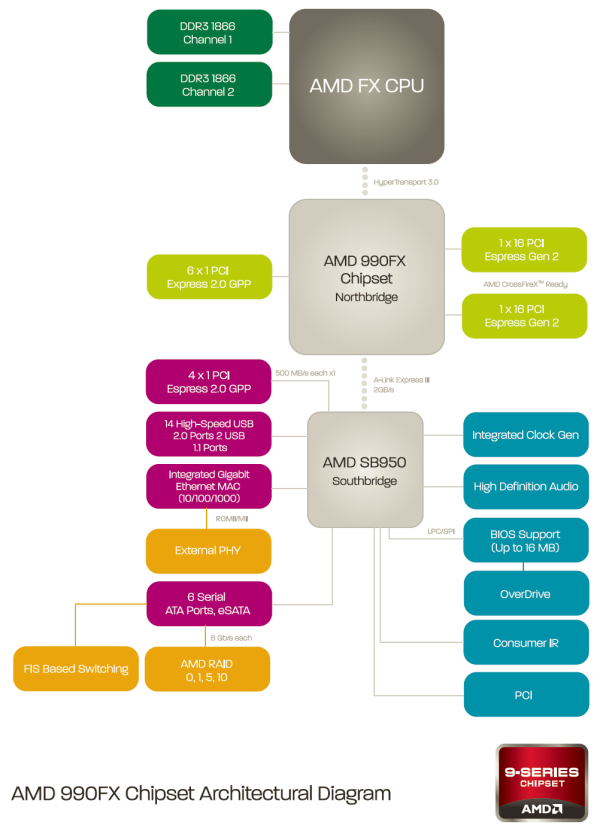Sticking with Chipsets
As mentioned on the previous page, AMD is sticking with a north and southbridge chipset design for the AM3+ platform and this makes sense in our opinion, particularly for such a high-end platform. By including separate chips to handle PCI Express lanes and connectivity, AMD has not only been able to simplify the processor design, allowing it to focus on performance, but it also grants the company a great deal of flexibility.

The AM3+ platform is supported by the 9-series chipsets, which currently include the 990FX, 990X and 970 northbridge with the SB950 southbridge. This chipset series features the same 65nm silicon used by AMD's previous-generation 8-series chipsets.
In fact, the SB950 and SB850 are the same chip and therefore offer the exact same features. The reason for the name change is simply to help the user identify that one is designed for the AM3+ platform while the other supports AM3 processors.
The SB950 southbridge supports six SATA 6Gb/s ports with AHCI 1.2 as well as RAID 0, 1, 5 and 10. Additionally there is support for 14 USB 2.0 ports along with two USB 1.1 ports and gigabit Ethernet. When compared to the Intel Z68 PCH (Platform Controller Hub), there is nothing missing from the SB950 southbridge.
Meanwhile, the 990FX (codenamed RD990) is essentially the same chip as the 890FX, though there is one minor change. The 990FX has been updated with HyperTransport 3.1 to support up to 51.2GB/s bandwidth between it and the CPU. The 890FX is equipped with HT 3.0 which features a bandwidth of 41.6GB/s.
The 990X is a cut down version of the 990FX, as it reduces Crossfire support from dual x16 or quad x8 lanes to a pair of x8 lanes with no quad-fire support. Continuing with the theme, AMD's 970 chipset is basically a rebadged 870 with HT 3.1 support added. It lacks Crossfire support as it only includes a single PCIe 2.0 x16 lane.